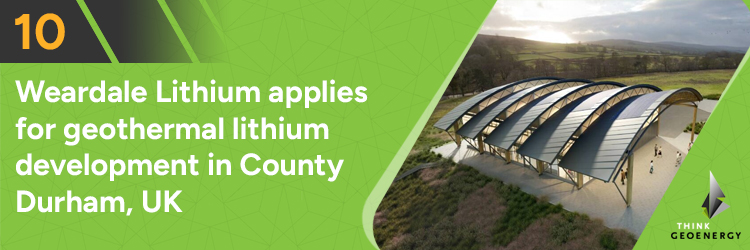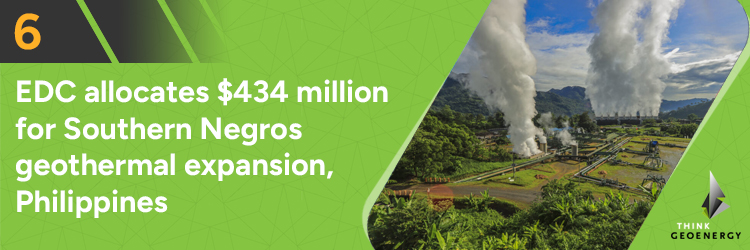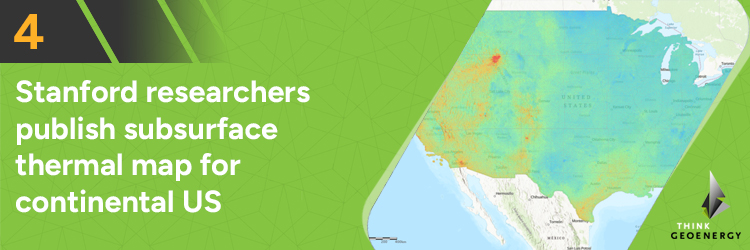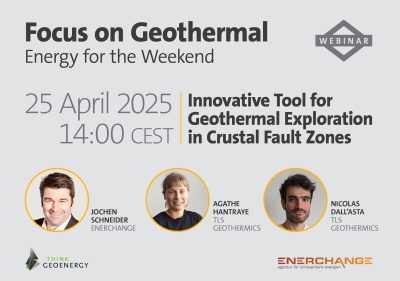2024 Retrospective – ThinkGeoEnergy’s Top 10 most-read geothermal news stories
ThinkGeoEnergy's Top 10 geothermal news stories for the year 2024 highlighted the diversity of geothermal geographically and in terms of utilization.
As part of our annual tradition, we have collated our website traffic numbers to come up with a list of the Top 10 most-read geothermal news stories that we have published for the past year. This ranking covers our website traffic from all sources for the whole 2024 calendar year. This year’s list is wonderfully diverse, both in terms of geography and how it shows off the different facets of geothermal energy utilization.
Before jumping to the Top 10 list, it is worth noting that the most-visited page at ThinkGeoEnergy is, by far, our Global Geothermal Power Plant Map. This map is at a constant state of change as we periodically look at how we can improve the data or keep it up-to-date. Our Top 10 geothermal countries from the start of 2024 also had plenty of traffic. Surprisingly, the 2023 version of the Top 10 geothermal countries still drew plenty of interest.
Collecting our website data and coming up with a Top 10 list based on visits has always been a great way for us to gauge the level of interest of our readers. It is also our way of saying thank you to you, our readers, for your continued support for ThinkGeoEnergy. On to the Top 10!

Starting off the Top 10 list is the submission of the planning application of Weardale Lithium for the phased construction of a lithium extraction plant at Eastgate in Weardale, County Durham, UK. The company had already successfully extracted lithium carbonate from geothermal brine at the site, confirming the viability of the resource. The application for the pilot plant follows over 3 years of work in the area including trialling of multiple Direct Lithium Extraction (‘DLE’) technologies to find the optimal way to extract lithium from the geothermal groundwaters.
Lithium extraction remains one of the most interesting alternative revenue generation options for geothermal projects. Similar projects have become fairly advanced in Germany and the US, while early efforts are already underway in Italy, France, and Australia. Currently, commercial-scale lithium production from geothermal brine is yet to be realized but there is clearly plenty of interest in this topic.

With AI being one of the major buzzwords of the past year, it was inevitable that one of our articles mentioning AI would also be one of the top ten stories of the year. This particular story involves Indonesian geothermal developer and operator Star Energy Geothermal partnering with IT company Kyndryl for a project that aims to use AI to optimize Star Energy‘s operational activities.
Technology based on rapid collection and processing of high volumes of data are already being employed in geothermal projects worldwide, whether in exploration, drilling, or power plant operations. Notable examples are the use of IoT technology in Indonesia and Kenya, machine learning for drilling in New Zealand, and AI-led geothermal exploration being pioneered by Zanskar.

There were lots of news stories on acquisitions in the past year, but one particular story resonated the most – the acquisition of the Lightning Dock geothermal power plant in Hidalgo County, New Mexico by Zanskar Geothermal & Minerals from previous owner Cyrq Energy.
Why was this story particularly interesting? Part of the intrigue is the growth of Zanskar that came with the acquisition. The company, previously known as a provider of exploration and subsurface characterization services, transitioned into a geothermal power plant operator. The power plant also complements their classical expertise, providing a facility for development and testing of new subsurface technologies.
It bears mentioning that ThinkGeoEnergy broke the news of this acquisition, and we would like to express our gratitude to Zanskar for trusting us!

It has been an absolute delight keeping an eye on the geothermal progress of Kenya in the recent year. Aside from the continued growth of Olkaria, we are particularly excited to see the completion of the Phase 1 development of the Menengai geothermal field. This story on the credit investment of the Development Bank of South Africa on the 35-MW development of Sosian Energy in Menengai is another positive step towards this goal.
With construction work ongoing on two geothermal power plants in Menengai, we are likely only a few months away from Kenya joining the much-coveted 1 GW club for installed geothermal power capacity. Yet, the country is only getting started and we expect to see plenty more geothermal power facilities to be completed in the coming years.

There are a few things that stood out in this story about Energy Development Corporation expanding the installed power capacity at the Southern Negros geothermal field. The first is the amount being allocated for it – it is a huge amount that will cover the drilling of new wells, construction of new well pads and surface facilities, and will even support the development of emerging technologies.
Operating since the early 1980s, the scale of the Southern Negros geothermal field is already quite impressive. Its steam field can support up to 241 MW of capacity from 92 wells. The fact that expansion is still being eyed for it is a testament to the resilience and sustainability of operating geothermal fields.

The project being undertaken by Karsan Ramji and Sons Ltd’s with Steam Srl as Owner’s Engineer is unique and novel in several ways. For starters, it will be the first direct-use application of geothermal heat in cement manufacturing. There will also be a 4-MW captive geothermal power plant to supply the power requirement of the manufacturing facility.
Such a project expands the horizon of how geothermal energy can be utilized, particularly in hard-to-abate industries like cement manufacturing. This is also an excellent examples of how markets can be created for geothermal, attracting further investment and facilitating development.

Data, especially subsurface data, is invaluable when it comes to geothermal prospecting. If there’s a way to access this data quickly and inexpensively, then that makes the whole project development process a lot more accessible. This article on a study done by researchers at the Stanford University that resulted in a temperature-at-depth model for the continental United States resonated with this need for easily accessible, high-quality data.
The good news about the US is that there is already a wealth of subsurface data from different sources. This new model gathers all this data and processes them using neural networks, allowing for reasonable prediction of critical subsurface parameters. Similar efforts are being done as well in other parts of the world.

Emerging regions always make for very good stories to follow and report on. India has had excellent progress in the past year, with drilling continuing at the Ladakh site and detailed studies being done in the Arunachal Pradesh region. This particular project aims to evaluate the different direct-use applications of geothermal heat and is being done with technical assistance from Norwegian and Iceland partners.
We are of course not oblivious to the geopolitical significance of the Arunachal Pradesh region, which has likely drawn more interest towards this story. We hope that such conflicts get resolved quickly and peacefully, and that geothermal development becomes a tool for community empowerment and economic growth.

As one of the pioneers in geothermal power generation, the expertise of New Zealand in the field of geothermal is globally recognized and admired. While the country’s geothermal power sector continues to grow, it is also working on more direct applications of geothermal, particularly for process heat in the Bay of Plenty region. Process heat in this context refers to heat used for manufacturing and processing products, something that is still predominantly derived from coal and gas combustion.
Process heating has huge potential for geothermal, notably because there are many industrial processes that use low or medium-grade heat. Such facilities also provide jobs and contribute in building a local manufacturing sector, thus strengthening local and regional economies. Such studies exhibit that heating should not be overlooked in the geothermal conversation. It has tremendous potential, has a lower technical barrier to entry, can empower economies, and provides quality of life improvements to local communities.

It’s hardly surprising to see the groundbreaking Eavor-Loop project in Geretsried, Germany at the top of the list. This update, published in March 2024, states that Eavor has drilled a total of 7000 meters measured depth at the project site, combining both the vertical and lateral sections. There have been a few updates reported since, notably reaching a total measured depth of 8000 meters by the end of 2024. The company is now expecting to generate geothermal power for the first time at the Geretsried site in 2025.
The Eavor project has had its fair share of critics, but one thing that cannot be denied is that the project and technology has managed to capture the public’s attention in a way that is quite rare in the geothermal industry. If proven viable, then this is a technology that can truly fulfill the promise of ‘geothermal anywhere.’ This is exactly what we aspire for in the geothermal industry, and we are eager to see the success of this project.



















